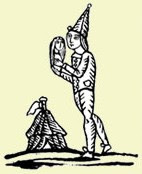
The old hardback version of this book that I have, not dissimilar to the copy pictured here, is a 1939 edition and it came in a box of old books given to me by a friend. It has a preface written in it by Thomas Hardy himself in April 1912. It is my third Hardy novel, the others being Far from the Madding Crowd (studied twice, read at least 3 times, much loved), and Jude the Obscure (read once which was enough, very good but hard going), although I feel as if I have read more having seen many TV and film versions of his novels. This title is the set Hardy novel for my literary holiday in Dorset in a few weeks.
Set in the deep woods of 19th century England, this story tells of the inhabitants of Little Hintock, their interactions with each other and their essential relationship with the woodland around them. We have Giles Winterbourne, stalwart and loyal, respected by those around him, a worker in the woods with a unique understanding of the trees that he works on. Giles loves Grace Melbury, daughter of George Melbury, who had sent her to an expensive school to learn how to be a lady and better herself. Edred Fitzpiers is the unconventional young doctor from a rich family, Felice Charmond is the rich widow inhabiting the nearby manor house with a taste for young men, and Marty South is the poor young worker, who stays on the sidelines but plays a central part in the plot.
This is a story about relationships, promises, marriage and thwarted love. It is also a contemplation of the beauty of old woodlands and the tiny microcosm of society within them. All of Hardy's novels explore a disappearing way of life, rural traditions practiced away from the towns and cities, but this one seems even more so. It is as if the people in this novel are entirely seperate from any other society, and the trees close up around them, sealing them in.
Hardy's novels are not known for their cheeriness, although to say they are without humour would be misleading, and this story has its fair share of tragedy and heartbreak. Hardy is most memorable when exploring missed love affairs through circumstance or bad timing, and all of the agonies of the 'what ifs?...' that he evokes in the reader, and this one uses all of this to excellent effect.
I really enjoyed inhabiting their woodland haven with them, following their days as they walk among the trees. The woods are a tangible character throughout and form some of the most memorable imagery. The story was easier than Jude with a well rounded feel to it, very moving and beautiful to read. The last few paragraphs touched a nerve and had me gulping back tears. Grace is not like Hardy's stronger females such as Tess or Bathsheba, but I really liked Giles, and I think Marty gets my favourite character award due to the skillful writing as she is not in it very often.
One of the easier Hardy novels, though not without sadness, and a must for English classic fans or those who love rural novels as I do. I look forward to discussing it on holiday.
The Thomas Hardy Society is a good place to call in on for Hardy fans.
There is also an interesting article titled Hardy's Romanticism in The Woodlanders if you wish to read further.
























2 comments:
I liked this book too and would definitely recommend it to anyone who has not yet tried Hardy or been put off for life by reading something like Jude the Obscure. I'm currently reading The Girl with the Blue Eyes and whilst I'm not enjoying it as much as The Woodlanders it is also a good insight into a vanished rural way of life.
Hi Ruby, thanks for dropping by and leaving a comment. I agree, it is a much more accessible and rounded book if you were new to Hardy, but beautifully written too. I love the rurality of it too.
Post a Comment